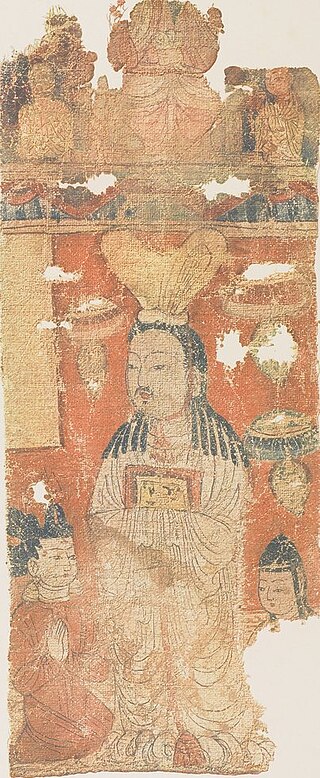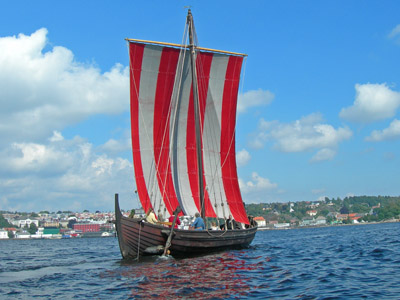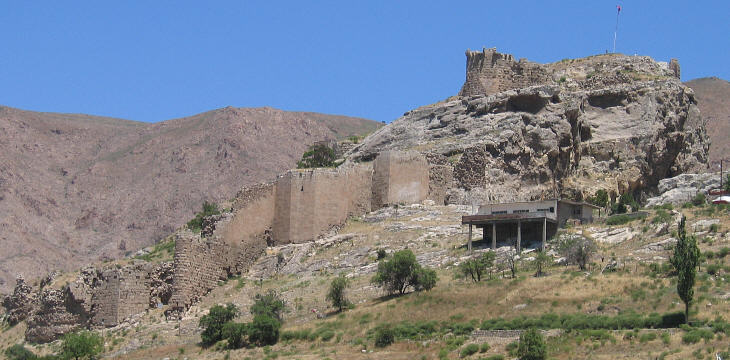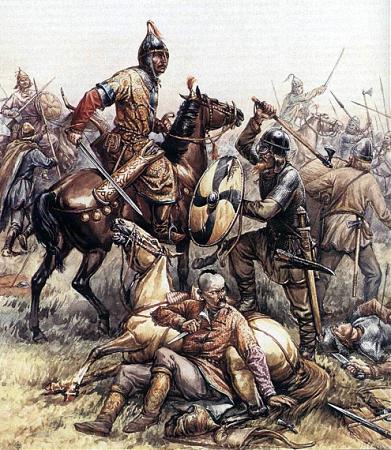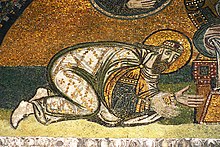As had been mentioned in the previous posts, Sogdiana in this period would have remained a federation of city states, under the suzerainty of various foreign rulers.
While the Sogdian city states would have placed themselves under the suzerainty of the Kouroshids, the newly emerging Radmanid Empire towards the end of the century would fail to subjugate the area.
Therefore, the remained Kouroshids would have tried to hold on to the regions of Sogdia, Ferghana and Khwarezm. Out of the pretenders, Bindu, who was a brother-in-law of the “true heir” managed to become the new ruler.
Thus one speaks of the rise of the Binduid dynasty, although technically they were a continuation of the Kouroshids. However, historians prefer to divide the two phases, for the Binduid phase saw a geopolitical and cultural change. Geopolitically, the empire was confined to Transoxania that is to Sogdiana, northern Bactria, Khwarezm and Ferghana. The royal court would accept this shift and Sogdian would become the language spoken at court.
From the linguistic point of view, Sogdian would predominate in the Binduid realm, being the prestige, liturgical and religious language of the region. Therefore, it would displace Khwarezmian and to a lesser extent Tukhari Bactrian in the southeast, especially in the urban and transitional regions. Khwarezmian, would however remain as a vernacular in the lower and middle Oxus valley; furthermore Bactrian would continue to be used especially by the Buddhists of the upper reaces of the valley in the region of Tukharistan.
Sogdiana would have become a major centre of civilization, of literature, science and education in the region. At this time, Sogdiana would have become the centre of the Manichean community worldwide. The Manicheans of Central Asia would view their western coreligionists as rather lax, and would call themselves Denawar, that is, believers. The importance of Sogdia as the core of the Manichean community became reflected by the Archegos or Qahna, or the Manichean Pope if you wish, when he relocated to Samarqand in the late ninth century.
While by the late ninth century, the religions were largely equal in Sogdia itself with 30% Manicheans, 25% Nestorians, 15% Zoroastrians, 12% Buddhists, 8% Syriac and 5% Jewish, with the remaining 5% being practitioners of other faiths, the situation would have changed during the ninth century.
Sogdian coins had some Chinese influences
As by the end of the century, he distribution of religion has changed within the Binduid realm somewhat. Manichean grows to almost a half of the population, according to some estimates around 45%. The proportion of Buddhists amounts to almost half of that, with some 21% possibly – this is caused by the addition of the Tukhari valleys on the Upper Oxus. The third most numerous religion in the realm is Nestorianism, having sunken to a mere 16%. Zoroastrianism decreased even more dramatically to some 8%; this was caused by quite a significant portion of Zorastrians converting to Manicheism, or to a great number of mixed marriages. Smaller parts of the population would go on to practise Judaism (3%), Tengriism and Jacobite Syriac Christianity (2% each), while the remainder would be immigrant faiths
Sogdian silk
Although the country was a monarchy, the lower levels of the state administration would not have been administered hereditarily. The topmost divisions, the satrapies, would have been governed a
satrap chosen by the monarch. Those by turn would be divided into city-circuits or districts, which would have been administered in the form of a merchant republic. The region of Tokharistan would have been an exception to this pattern, as the satrapy itself would be divided into the counties of Saghaniyan, Kubadhiyan, Khuttal and Badakhshan, which would be ruled by the aristocracy.
The immediate eastern or northeastern neighbour of the Binduid Empire was the Karakhanid or Karluk Khanate. This realm could be found in the Zhetysu and the Balkash basin; and has managed to unify the disunited clans and tribes in the region.
While linguistically similar (all belonging to the Turkic linguistic family), this steppe empire had been religiously diverse; with some tribes like the Chigils being Nestorian Christians, while other tribes such as the Turgesh and the Yagma being Manichean. While many of the khans were Tengri, in practise there would have been much religious syncretism going on, as the Chigils were Nestorians and the Turgesh were mostly Manicheans. In the 870s, the Karluk khan had accepted baptism at the cathedral of Taraz and proclaimed it to be the state religion. This would have been largely accepted by the Tengriists, who would however not want to let go of their old faith, but the Manicheans would not at all tolerate this.
This would result in the Turgesh and Yagma revolting and overthrowing the Khagan. The new Khagan would be a Manicheist zealot himself and would seek to enforce Manicheism on his subjects.
To the southeast of the Karakhanid realm was the Tarim Basin, and the western reahes of the area were still independent as the Kingdom of Khotan; a largely Buddhist, Saka-speaking realm, using Gandhari Prakrit as a ceremonial language. Other realms in the area were the Saka kingdoms of Shule and Shanshan.
The northern parts of the Tarim basin, but also in the Dzungar basin was the Kingdom of Qocho. This was found after the dispersal of the Uyghurs and the fall of the Uyghur Khanate, which had dominated the Eastern Steppe.
Buddhist monks in Qocho
The Uyghur Khanate had been overthrown by the Yenisei Kirghyz, together with the Chinese imperial army. The ethnic Uyghur were dispersed; some would head south, eastablishing the Ganzhou Uyghur Kingdom in Gansu corridor; others would move westwards to the Tarim and Dzungar basin; to the area known to the Chinese as the Xinjiang.
The Uyghurs of Ganzhou would become to be known as the Yugur; they would live at the foothills of the Qilian Mountains, and practise mostly Manicheism, but also Buddhism.
The Yenisey Kirghyz would fail to form a unified empire; instead, each of the tribes, be they Kirghyz, Naiman, Kerait or Tatars would enjoy independence from one another.
Uyghur Khagan
But let us return to the fate of the Kingdom of Qocho. The Turkic Uyghur incomers would live side by side with local Arsian peoples. The Uyghurs in Qocho would have encountered a more advanced Buddhist civilization; and they would gradually abandon their own script, and adapt the alphabet of the local peoples, which would become known as the Old Uyghur Script. Chinese influences would be quite strong in the region; and Chinese language would be regarded as a prestige language, therefore also the Uyghur script would be written vertically under Chinese influence.
Manichean Uyghur Elect
The Manichean religion of the incomers was met with the Buddhist religion of the locals. This was complemented by Nestorian monks, who would have travelled along the Silk Road, building monasteries and schools, hospitals and churches and gaining followers. Despite a strong Buddhist presence, it was eventually contact along the Silk Road with Sogdians, who have been the decisive factor in retaining the Manichean identity of the Kingdom.
To the north of the Kingdom of Qocho remained the lands of the Nestorian Basmyls, who were guarding the Dzungar Gate, which is actually the most distant point from any ocean in the world.
Further westwards we have the Kimek-Cuman Confederation, also known simply as Cumania. Located between the Ob, Irtysh, Ural Rivers and Lake Balkash, this steppe empire roughly corresponds to the area which our readers may identify as Kazakhstan.
The Kimek-Cuman Confederation consisted of seven principal tribes. Two of them were of course the Kimek and the Cumans. Then we have the Bayandur, the Lanikaz, the Arjad, the Yamak and Tatars (sic).
Although founded by the Kimek, better known are the Cumans, also under the names as Kipchak or Polovtsian (to Slavic historians) people. The Kimek peoples inhabiting the eastern parts of the realm would have adopted Manicheism; the gross majority of the Kipchaks and the Cumans would however, remain Tengri.
The Kangar union on the Lower Jaxartes would have ceased to exist; its tribes would have migrated westwards to become knowns as the Pechenges, its lands being divided between the Karakhanids and the Oghuz Yagbus.
The Oghuz Yagbu State as a Turkic Nestorian realm continued to exist to the east of the Caspian Sea, also incorporating the lower Jaxartes regions as well. Its capital would have been transferred to the city of Yangikent on the lower Jaxartes.
The word Yagbu in itself meant an elected chief; that is that the leader of the entire confederation was to have been selected from among the leaders of the individual tribes or clans.
Looking now at the Western Steppe one can witness a weakening of Khazaria. The Khazars have lost practically all of their land east of the Itil River to the incoming Pechenegs; who would have held the lands between the Ural and the lower Itil Rivers.
However, we will stop here with the historical narrative; the Western Steppe would see some interesting developments and would interact with the European neighbours, so it will be the focus of some later update.
Rather, I shall use this space to explain the basics of Manicheism to the reader°,°as the religion has been mentioned quite often further above.
Manichaeism is one of the world’s major religions, originating in Mesopotamia. Mani himself originally belong to the Elcesaites, a Judeo-Christian sect. The religion itself could be either classified either as a Mazdan or Iranian religion, or be classified as a Gnostic religion; this could have been true in the early centuries of its existence; however in the ninth century, Manichaeism would have had much more followers than all the other Gnostic denominations put together.
Manichaism can be seen as the first rather successful attempt on creating a syncretic religion. Many himself admitted taking influences from Christianity, Zoroastrism and Buddhism; however the teachings of Jesus Christ, Zoroaster and Gautama Buddha were declared incomplete and the ultimate religion was to be the “Religion of Light”.
Left to right: Mani, Zoroaster, Buddha and Jesus
As for the basics, Manicheans believe in a Dualistic worldview. There is a realm of Light and a realm of Darkness; those being in constant struggle. This is an idea present in Zoroastrism as well. The material world would be considered evil, and the spiritual one the good one. Therefore, each person should seek to favour the interests of the spiritual to the needs of the flesh.
Worship of the Tree of Life in the Realm of Light
The creation is depicted as having the realms of Light (a peaceful blissful harmony) and Darkness (warlike anarchy) separate, with the Darkness invading the realm of Light. The realm of Light ultimately develops the ability to defend itself; and the world is created as a prison from the corpses of slain demons, but also it was to create a mechanism for the lost particles of the Light beings. The redemption of the fallen “Light” beings being the ultimate ends. Humanity is considered to be a creation of evil.
Humankind however could be salvated, and this mission began by Jesus the Splendour in the time of Adam, and would be carried on by several other prophets, although their messages would have been twisted. There are actually ttwo salvations: Salvation of the human soul, and salvation of the World Soul (liberation of the fallen Light) through human beings
Uyghur Manichean Electae from Qocho
What are the implications? Well the “elect” or clergy would be subject to vegetarianism, chastity, non-alcoholism, and forbidden to kill or hurt. The lay people would provide for the clergy, and were given more moderate commandments, esp. not to be miserly.
The Manichean faith would include five pillars, being, Commandments, Prayer, Alms,Fasting and Confession of Sins.
While Zoroastrians have a motto of “Good Thoughts, Good Words, Good Deeds”, Manicheans would have a credo of “Love, Faith, Fear of God and Wisdom”.
The Manichean Commandments would be also ten:
1. Prohibition of idolatry
2. Purity of the mouth: no blasphemy, lying, slander etc.
3. No meat and fervented beverages
4. No denigration of prophets
5. Be faithful to your spouse. No sex during fasting
6. Help the needy and don’t be greedy
7. Don’t help lapsed Manicheans
8. Do not hurt not only humans, but also animals
9. Do not steal
10. No magical practices, potions etc.
Prayer was four times a day, at dawn, midday, sunset and after dark. Prayer was directed towards the Sun and Moon; if not visible then towards the Pole Star.
Manichaen Priests from the Tarim Basin
Alms meant providing for the “Elect” or clergy in the form of a tithe. Fasting was observed at Sundays, when even the laymen would be subject to the strict moral code of the “Elect”. Annually, there would also be a 30-day fast, terminanting with the celebration of Bema.
The Confession of Sins would take place on Mondays, for Hearers (laymen) and Elect (clergy) alike. The grand confession would be at the end of the fast, with a collective confession of sins committed throughout the year.
The liturgical year was divided to commemorate the major phases of Manis life: birth, call of the angel, dispatch of the prophet, passion and death, and martyrdom of first apostles. The greatest festival would be Bema (comparable to Christian Easter in its nature) The month-long Manichean fast would extend from 8Feb to 8 March
